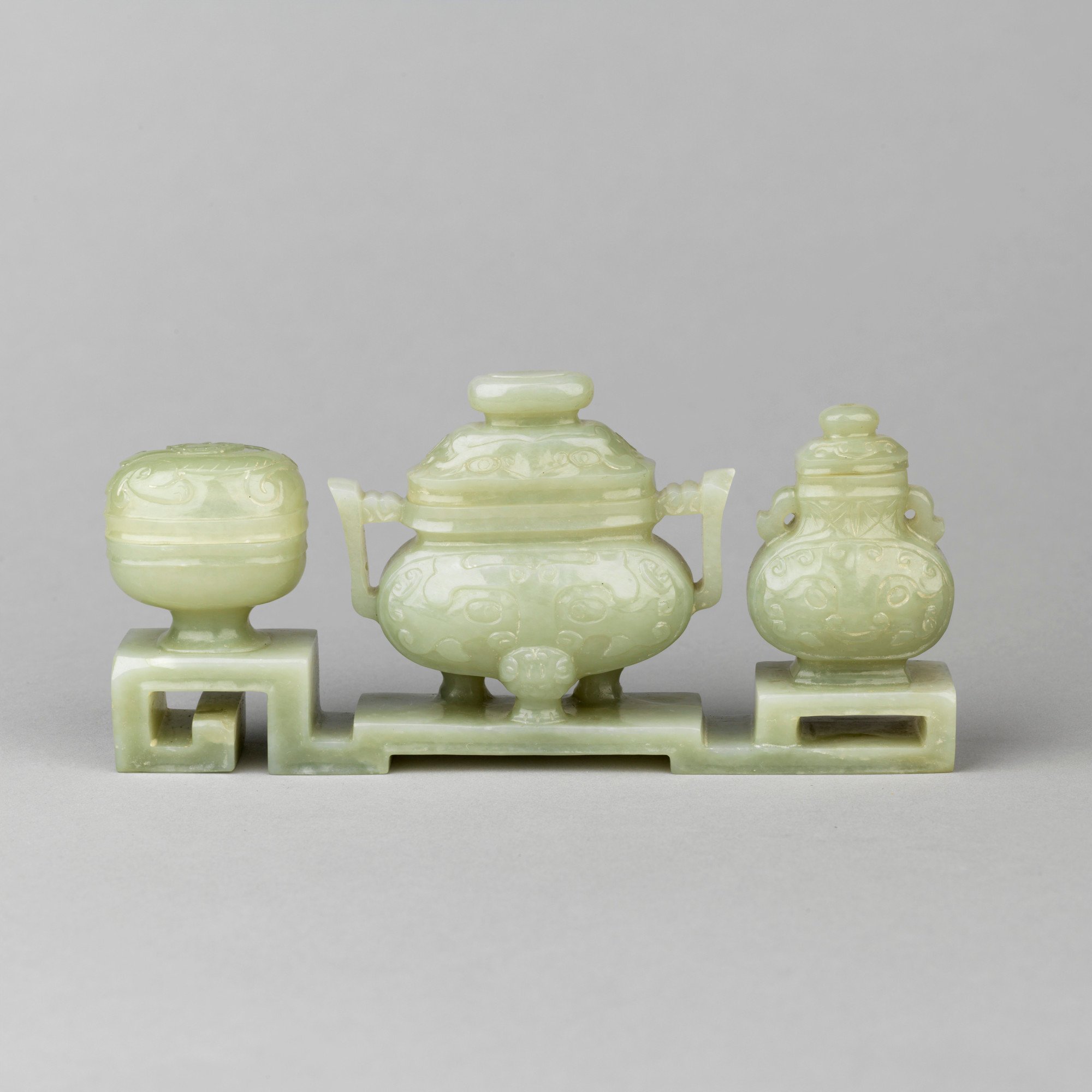
Vibrant jades collected from around the world
Chinese jade
Although chiefly obtained from other parts of Asia, jade has always been prized in China. Chinese nephrite has long been associated with imperial courts and the stone was so highly valued that Confucius ascribed to it 11 virtues (benevolence, intelligence, righteousness, propriety, music, loyalty, good faith, heaven, earth, virtue, and the path of truth and duty). Jadeite was not used in China until the eighteenth and nineteenth centuries, when it was imported from Myanmar.
The origins of Chinese jade in the Royal Collection came in the gift that the Qianlong Emperor sent to George III following the visit of Lord Macartney's Embassy in 1792-4. The Qianlong Emperor was one of the most famous collectors of all time and is also notable for the patronage which he extended to the jade-carving industry.
In the late nineteenth and early twentieth century, Chinese emperors gave gifts of jade in commemoration of British monarchs' jubilees and coronations. In addition, a substantial collection was assembled over the lifetime of Queen Mary, consort of King George V, who developed a passionate interest in carvings in jade and other hardstones.




